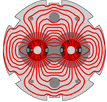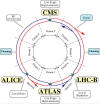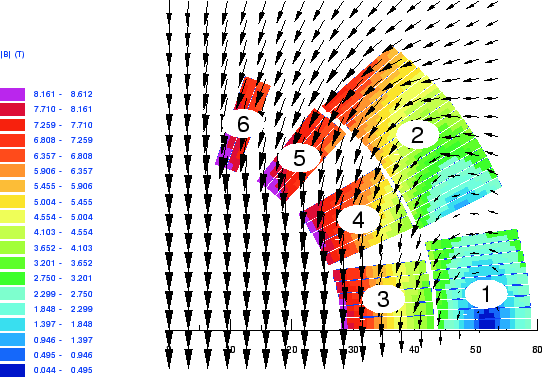|
|
MAGNETS |
|
||||||
|
|
||||||||
|
There are a large variety of magnets in the LHC. However the big ones are the main dipoles. Main Dipoles
The main budget item and a serious technological challenge are the superconducting (1.9 K) dipoles which bend the beams around the 27 km circumference of the LHC. At 7 TeV these magnets have to produce a field of around 8.4 Tesla at a current of around 11,700 A. The magnets have two apertures, one for each of the counter-rotating beams. Each one is 14.3 metres long. A total of 1232 are needed.
Dipoles in the assembly hall
A quarter of a dipole aperture showing the 6 superconducting blocks and the magnetic field produced.
The manufacture of the coils, which contain the superconducting cable to provide the all-important 8.33 T magnetic field, represents 60% of the magnet production work. The niobium-titanium coils create the magnetic fields to guide the two counter-rotating proton beams in separate magnetic channels, but within the same physical structure. The coils are surrounded by non-magnetic "collars" of austenitic steel, a material that combines the required properties of good thermal contraction and magnetic permeability. The collars hold the coils in place against the strong magnetic forces that arise when the coils are at full field - the force loading 1 m of dipole is about 400 tonnes. |
||||||||




